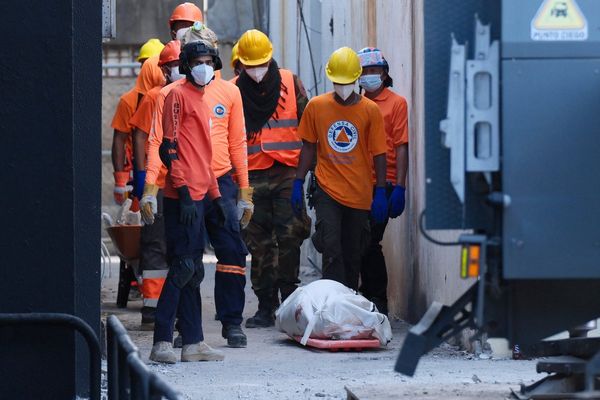CheckMate is a weekly newsletter from RMIT FactLab recapping the latest in the world of fact checking and misinformation. It draws on the work of FactLab's researchers and journalists, including its CrossCheck unit, and of its sister organisation, RMIT ABC Fact Check.
You can subscribe to have the next edition delivered straight to your inbox.
CheckMate May 26, 2023
This week, we tackle a claim that 400 drugs on Australia's "critical shortage list" will be harder to come by due to the government's decision to allow 60-day scripts.
We also bring you research into baseless narratives surrounding sex offenders and the LGBTQ+ community, and update how the Albanese government is tracking on its election promises.
Does the 60-day prescriptions plan really risk medicine shortages?
As part of its plan to reduce cost-of-living pressures, the federal government recently announced it would halve the number of scripts — and, by extension, co-payments — required for some drugs by allowing patients to collect 60 days' supply of medicines at a time, double the current 30-day maximum.
The change was welcomed by doctors' groups, who called it a "win for patients", but condemned by the Pharmacy Guild of Australia, an industry body representing community pharmacies.
Soon after the announcement, the guild launched a dedicated website warning that the new 60-day limit would "make medicines shortages worse".
Some pharmacies were reportedly directing customers to the site, which hosts a petition that has so far garnered more than 80,000 signatures.
"400 drugs are on the critical shortage list, and 20 per cent of these will be out of stock now that dispensing limits have been increased by the government," the website said.
So, how do those numbers stack up?
The figures change regularly, but data extracted from the Therapeutic Goods Admninistration's (TGA) medicine shortage database on May 23, 2022 shows that 495 medicines were facing a supply shortage.
Of those, shortages for 73 medicines were "anticipated" while 422 were "current".
But the Pharmacy Guild's website referred to the government's "critical" shortage list.
Only 46 of the 422 entries fit that description, while the other shortages were classified as having a "medium" (114) or "low" (262) impact.
Moreover, the database — which reports shortages of specific brands and products — explicitly states that alternatives, such as generic drugs or even the same type of drug in a different strength, are available for some listed medicines.
This was the case for five of the 46 drugs with critical shortages (or nine including drugs available through the "special access scheme").
Meanwhile, 141 drugs of the 422 total were named as having alternatives.
In a recent letter to Minister for Health Mark Butler, seen by CheckMate, the Pharmaceutical Benefits Advisory Committee (PBAC) — which advised the government on medicines included in the 60-day change — explained that most of the shortages "apply to single formulations, strengths or brands or a single drug-in-class".
"Medicines where there is only one brand and that do not have closely equivalent medicines available … represent a relatively small number of the total," they wrote.
Separately, Antonio Ahumada-Canale, a pharmacist and research fellow at Macquarie University's Centre for the Health Economy, conducted a preliminary analysis of the shortage list on behalf of CheckMate to roughly estimate which medicines likely had alternatives.
This was done by matching "formulary" codes, which he said "distinguish between medicines that actually have alternative [treatments] and those that don't".
While not all drugs could be readily classified, Dr Ahumada-Canale found that some 315 (of 422 drugs) most likely had alternatives, while 30 did not.
"Of the 30 medicines, at least 11 are typically used in hospital settings [rather than pharmacies]," he added.
Most importantly, few unique drugs on the shortage list will be affected by the government's 60-day change, which will apply to 325 types of medicines (or 932 PBS items) and be rolled out in three stages from September.
According to PBAC, in April 2023 "only seven medicines of the over 300 medicines had shortages … where there is no direct alternative brand, strength, or formulation".
CheckMate examined the list of 46 critical shortages and found it contained only three products eligible for 60-day scripts.
These included two strengths of the same tablet, used for treating hypertension, and another type of (already unavailable) tablet for treating recurrent streptococcal infections.
Numbers aside, experts have dismissed claims that the change would cause shortages.
Stephen Duckett, a health economist and emeritus professor at RMIT University, described the idea as "complete rubbish", telling ABC News that increasing the limit was "not going to increase the number of drugs dispensed. It's going to change how often they are dispensed".
Similarly, Dr Ahumada-Canale said the claim "makes no sense" because "people are going to take the same amount of medicine".
Pharmacies would need to "overstock so they can cope with demand" in the first month or two, he added, "but after that, it should be the same".
Speaking on ABC Radio, the Australian Medical Association's (AMA) Queensland president Maria Boulton said most supply issues were "short term" and related to antibiotics, which had short scripts so would be unaffected.
"[I]n New Zealand, you can get three months' worth of scripts dispensed, and they seem to be going all right," Dr Boulton added.
And according to PBAC, "[m]edicines shortages are determined by factors unrelated to the maximum dispensed quantity" and "usually not isolated to Australia".
Indeed, the supply shortage database names manufacturing issues and commercial changes as the reason for 330 of the 422 shortages, with fewer than 70 related to an increase in consumer demand.
From July 1, the government will introduce new requirements that will force manufacturers to hold 4-6 months of stock for some drugs in Australia.
"While these measures will not prevent shortages that are outside of the control of Australian companies, they will help to ensure that Australian manufacturers are better placed to continue supply when global disruptions occur," the PBS website notes.
LGBTQ+ sex offender claims lack evidence
Research by FactLab's CrossCheck unit has revealed how false and harmful narratives portraying members of the LGBTQ+ community as paedophiles have been imported from the US and spread in Australia.
As CrossCheck found, old tropes mischaracterising gay men as paedophiles have more recently widened to include the LGBTQ+ community more generally, and in particular transgender people.
But this is despite a dearth of evidence backing up assumptions that members of the LGBTQ+ community are any more likely to be sex offenders, let alone child-sex offenders.
In Australia, for instance, there is no national sex offender registry, and while some countries (for example, the US and the UK) do maintain such lists, they do not collect data on gender identity and sexual orientation.
That said, a survey of self-identified registered sex offenders in the US found there was "no significant difference" between rates of child-sex offenders among LGBTQ+ or straight cisgender respondents.
Some widely spread claims, meanwhile, are based on data that has been deemed unreliable by fact checkers.
Indeed, a claim made by controversial former federal Liberal candidate Katherine Deves that "half of all males with trans identities are sex offenders" appears to have been based on a 2017 survey of prisoners in England and Wales, which reportedly found that half of all transgender prisoners in those countries were "either sex offenders and/or highly dangerous prisoners".
The findings of that survey, however, were debunked by fact checkers at the BBC, who noted that the publisher of the data — the Ministry of Justice — said the figures were "not yet a reliable reflection of the numbers and location of trans prisoners in the prison estate".
Among the issues with the count were the fact that closeted inmates would not be included, nor would inmates who had been granted a Gender Recognition Certificate (to legally recognise their gender) or those who had not yet had a formal meeting to decide on how they would be managed within the prison system.
Keeping track of Labor's 2022 election promises
A year on from the Albanese government's electoral victory, RMIT ABC Fact Check has launched its Promise Tracker, which will keep tabs on 64 key pledges made by Labor in the lead-up to the 2022 vote.
Over the next two years, the Fact Check team will track Labor's progress on its promises with five categories to determine the live status of each pledge: delivered, in progress, stalled, thwarted and broken.
Upon its launch this week, the tracker showed 18 promises had already been delivered, 40 were in progress and six were stalled.
Commitments so far delivered on by the government included promises to establish a royal commission into Robodebt, to retain the Coalition's one-off $420 increase in the low-and-middle-income tax offset and to make the controversial cashless debit card voluntary.
The 2022 Promise Tracker is the second time Fact Check has undertaken such a project, with the first version tracking the governments of Tony Abbott and Malcom Turnbull between 2013 and 2016.
(The defunding in 2016 of the previous iteration of Fact Check, prior to the ABC's partnership with RMIT, and the onset of the pandemic in 2020 led to the Promise Tracker's absence over the previous two election cycles.)
So, how does Labor's record compare to the Coalition's progress at the one-year mark 10 years ago?
While Labor is yet to break a promise (although it appears on track to break a commitment to steer clear of tax reform), the Abbott government had already broken 12 promises by the time it had reached its one-year anniversary. (Meanwhile, it had delivered on 14 promises, with a further four promises stalled.)
Stalled promise leads to overstated Greens claim on rents and wages
One key election promise not yet delivered by the Albanese government is its commitment to establish the $10 billion Housing Australia Future Fund, with the legislation stalled in the Senate as a result of opposition from the Coalition and the Greens.
Greens leader Adam Bandt raised a number of concerns about the bill on the ABC's 7.30 program, including what he said was its lack of support for renters.
"Labor's got no plan for renters," Mr Bandt said. "Rents are rising six times faster than wages."
But that claim is overstated, according to Fact Check.
Experts said there were two key measures of rents, but pointed to the rent component of the consumer price index, published by the Australian Bureau of Statistics, as best reflecting changes in rents across the whole market.
By this measure, rents in Australia increased by 4 per cent in the year to December 2022, while wages grew a little slower at 3.3 per cent over the same period.
The experts also pointed to several reputable data sources for "asking rents", which refers to changes in advertised rents for new leases.
Figures for the increase in the year to December 2022 ranged between 6.7 per cent and 25.1 per cent; that is, between 2 and 7.6 times the rise in wages over the same period.
So, while the small percentage of renters taking on new leases — estimated to represent 2 to 3 per cent of the market each month — may have experienced rental increases in the order of six times the growth in wages, this was not typical across the entire market.
Nevertheless, experts said asking rents offered a glimpse of where the market may be heading.
Edited by Ellen McCutchan and David Campbell, with thanks to Esther Chan and Sonam Thomas
Got a fact that needs checking? Tweet us @ABCFactCheck or send us an email at factcheck@rmit.edu.au







